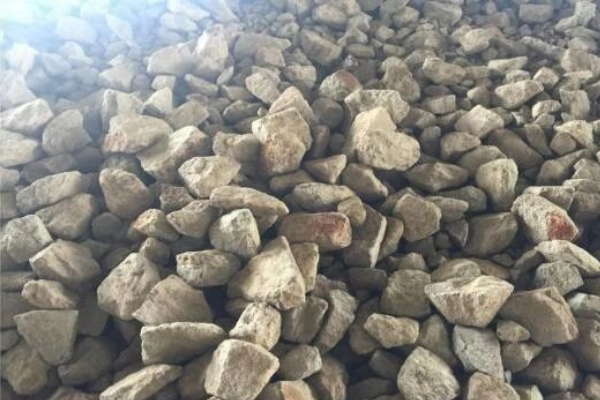알루미늄-실리콘 내화 원료 분석
교수. 베이징 과학 기술 대학교 리용(Li Yong)은 "내화물 원료의 관점에서 본 중국 야금 내화물의 최근 발전"이라는 제목의 보고서를 작성했습니다., 최근의 발전을 설명했습니다 AL2O3-SIO2 내화 된 원료.


가장 먼저, 교수. Li는 중국에서 Al2O3-SIO2 내화 된 원료의 특성을 분석했습니다.: 자연 내화 미네랄에는 보크 사이트 자원이 풍부합니다, 주로 Henan에 배포됩니다, 샨시, 그리고 구이 슈. 하지만, 알루미늄 함량이 높은 보크 사이트 광석 (나는 보크 사이트 등급, Al2O3 ≥80%) 부족합니다, 그리고 그들 대부분은 알루미늄 정제 산업에서 사용됩니다..
High-grade “three-stone” ores (블루 스톤, 로도 크로 사이트, 그리고 실리카) 드물다. 많은 양의 중간 및 저급 폐기물 솔리드 광석이 있습니다. (석탄 갱, 폐기물 보크 사이트, 빨간 진흙, 야금 슬래그, 등.). 혜택 후 광미 및 저급 AL2O3-SIO2 미네랄의 효율적인 활용은 중국 알루미늄-실리카 내화 원료의 개발 방향이라고 생각됩니다..
현재, 균질화 방법은 AL2O3-SIO2 천연 미네랄의 합리적이고 효율적인 활용을위한 일종의 처리 기술이며 빠르게 개발되었습니다., 그러나 적절한 발사 방법을 탐색해야합니다..
그들 중, 저급 및 중간 등급 AL2O3-SIO2 질량 미네랄 (45%-70% AL2O3 컨텐츠) 불순물 내용이 낮습니다. 이 재료는 2 차 뮬 라이트 광물 화과 관련된 확장 효과로 인해 소결하기 어렵다..
중간 등급의 보크 사이트 기반 균질 물질 이차 뮬 라이트 반응이 더 분명합니다., 터널 가마 소액 사용 사용은 가마를 쉽게 내려 놓을 수 있습니다., 소결 안전은 가난합니다. 더 넓은 범위를 선택하기위한 보크 사이트 기반 균질 물질 소성 장비의 낮은 알루미늄 함량, 터널 가마 또는 수직 가마 발사를 균질화하는 데 사용할 수 있습니다..


저조도 보조 산물 기반 전기 연액 뮬 라이트를 준비하기 위해 전기 유출 공정의 개발을 추가로 탐색 할 수 있다고 제안된다..
전자 화폐 저 알루미나 보크 사이트 광석의 화학적 조성은 AL2O3-67.67%입니다., sio2-14.20%, TIO2-5.38%, Fe2O3-0.11%, 벌크 밀도는 3.05g/cm3입니다.
전기 연액 방법에 의해 제조 된 보크 사이트 기반 뮬 라이트 물질은 고밀도를 특징으로한다., Fe2O3 불순물의 낮은 함량, 잘 발달 된 뮬 라이트 결정, 및 Fugitive 형태로 mullite에 분포 된 tio2.
“Three stones” is the production of low creep bricks, 에리스 라이트 벽돌, 및 기타 야금 내화성 제품에 없어서는 안될 주요 원료. China’s “three stone” mineral resources are scarce, 남아프리카에 의존하는 많은 수입 원료, 그리고 호주, Rhodochrosite와 같은, 호주, 등., can be used to replace some of the “three stone” minerals such as silica-rich nepheline, 염소산염, 다른 저 알루미늄 미네랄.
부자, 샨시, 내부 몽골 갱 45% -50%, 불순물 함량이 낮습니다 (특히 낮은 Fe2O3 함량), 풍부한 저장 용량. 고품질 알루미늄 내화 원료입니다, Gangue 기반 내화 원료 개발, 그리고 빠른 발전의 적용.
요약하다
요컨대, AL2O3-SIO2 자연 제품의 기술 경로를 결정하기위한 천연 원료 조성물, such as iron ladle – aluminum-carbon system (using chlorite – silicon carbide-based), 핫 블래스트 가로 저 크립 시스템 (using ordinary sintered corundum – bulk solid abandonment of the preparation of the electrofusion mullite as raw materials), 불순물 함량이 낮은 Corundum Mullite 시스템은 알칼리 증기에 대한 저항력이 뛰어나고 CO 부식 성능에 대한 저항력이 있습니다..
Brown Corundum은 전기 아크 용광로 정화 및 불순물 제거의 원료로서 높은 알루미나 보크 사이트입니다., 주요 불순물은 다음과 같습니다: TI2O3, 의 ( 기음, N, 영형 ), 합금 위상 tifesi2, 낮은 융점 위상 Ca3al2si3 (Mg, 의) O12, 칼슘 aluminate ca0.95mg0.9al10.1 (의) O17, Al4c3 및 c. 열처리 후 1600 ℃ 질소에서, Corundum mullite의 갈색 corundum 함량은 약 1.5 갈색 코 런덤보다 높은 시간. 질소 하에서 1600 ℃에서 열처리 후, 갈색 corundum의 ti-bearing phase에서 ti 요소는 deoxidized이고 ti(기음, N) 에 침전된다 낮은 멜팅 단계, 따라서 Brown Corund의 특성을 향상시킵니다.
소결 코런덤 재료는 벌크 밀도에 따라 3 개의 등급으로 나뉩니다.: >3.45g/cm3, >3.55g/cm3, 그리고>3.65g/cm3. 일부 저밀도 소결 코 런덤은 뜨거운 폭발로를 위해 Corundum-Mullite 시스템에서 사용할 수 있습니다., 소결 코런덤의 벌크 밀도는 일반적으로 3.55g/cm3입니다..
치밀한 소결 코 런덤 재료 (>3.65g/cm3) 제철소 시스템에 더 적합합니다: 슬라이딩 플레이트, continuous casting “big three”, 국자, 정제 된 Ladles, 등.
소결 코런덤의 대량 밀도를 개선하는 것은 전 세계적으로 도전하는 것입니다., 벌크 밀도는 3.65g/cm3입니다. 현재, 세계에는 해결책이 없습니다.
